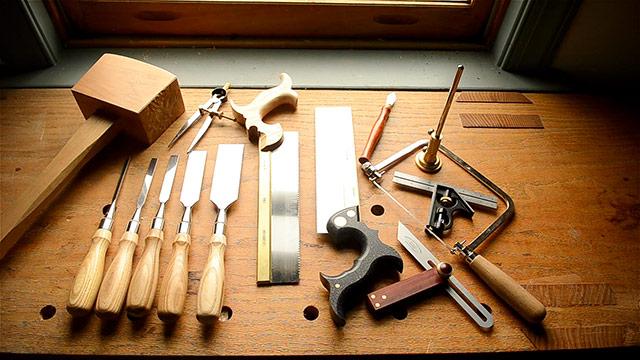Have you ever looked around your home and thought, “I could make something better than that?” Maybe you’ve stumbled across a piece of furniture that looked so enticing, you just had to have it, but your wallet was not in agreement. I get it. As an experienced industrial mechanic and a creative spirit, I’ve been in those shoes more times than I can count.
Crafting your own furniture is not just about cutting costs. It’s about breathing life into your home with pieces that tell a story — your story. Today, I’m going to share with you how you can start creating unique wooden furniture from scratch.
Gather Your Tools and Materials
First thing’s first, you need the right tools and materials. This doesn’t mean you have to break the bank buying the most expensive gadgets on the market. In fact, you can do a lot with some basic tools. In my experience, a circular saw, a set of chisels, a mallet, a power drill, and some sandpaper can get you pretty far. If you’re starting from ground zero, check out this useful guide on the 7 essential tools for your start-up woodworking shop.
For materials, it all depends on the kind of furniture you want to build. For beginners, I recommend starting with pine or poplar. They’re relatively soft and easy to work with.
Get Inspiration and Plans
With the right tools and materials in hand, you’re ready to embark on your creative journey. But where do you start? That’s where a good set of furniture design plans comes in handy. A plan not only provides step-by-step instructions, but it also gives you a visual representation of what you’re building.
Safety is Key
When you’re caught up in the excitement of a new project, it’s easy to forget about safety. But, working with tools and wood comes with its share of risks. Always remember to use your tools correctly, wear safety glasses, and keep your workspace clean and organized.
Build, Sand, and Finish
Once you’ve got your plan, start cutting and assembling according to the instructions. Take your time and remember: it’s okay to make mistakes. That’s how you learn. Once you’re done building, sand your piece until it’s smooth and then apply a finish to protect the wood and enhance its natural beauty.
Admire Your Work
Finally, take a step back and admire your work. You’ve just made something beautiful and functional from a pile of wood. That’s something to be proud of.
So, if you’ve ever had the inkling to try your hand at making your own furniture, don’t hold back. The journey might be challenging, but it’s also incredibly rewarding. You’ll develop new skills, save money, and fill your home with unique pieces that truly reflect who you are.
And if you’re interested in diving deeper into crafting your own furniture, here are 5 tips for crafting high-end furniture on a budget. It’s a great read that offers some valuable insights into turning your DIY projects into stunning pieces of art without burning a hole in your pocket.
So what are you waiting for? Roll up your sleeves and get started on your journey into the wonderful world of woodworking!
Understanding Wood Grain
Before diving into your project, it’s crucial to understand the basics of wood grain. The grain of the wood refers to the alignment, size, and appearance of the fibers in the wood. When you cut and shape the wood, these fibers can react differently, and understanding how to work with them can make all the difference in your finished piece.
Cutting against the grain, for example, can result in a rough and jagged edge, while cutting with the grain provides a smoother, more finished look. This is important to remember when planning your cuts and determining the layout of your piece.
The Value of Patience
Woodworking is an art form, and like all arts, it requires patience. Don’t rush your projects. Instead, take the time to measure twice (or even three times) before making cuts. Allow the wood glue ample time to dry before moving on to the next step. Let the finish cure properly before using your furniture.
Slow and steady really does win the race in this case. Remember, quality takes time. Each step you take is a valuable investment in your final product. By taking your time, you can avoid common mistakes and produce a piece that will last a lifetime.
Sustainability and Creativity
Building your own furniture from scratch also offers an excellent opportunity to make sustainable choices. There are many ways to incorporate sustainability into your projects. For example, you can choose to work with reclaimed or recycled wood. These materials often come with unique characteristics and a history that can add extra charm to your pieces.
You can also get creative with your designs to minimize waste. Consider how you can use offcuts or leftover pieces in innovative ways. Not only does this help reduce waste, but it can also lead to some truly unique design elements.

